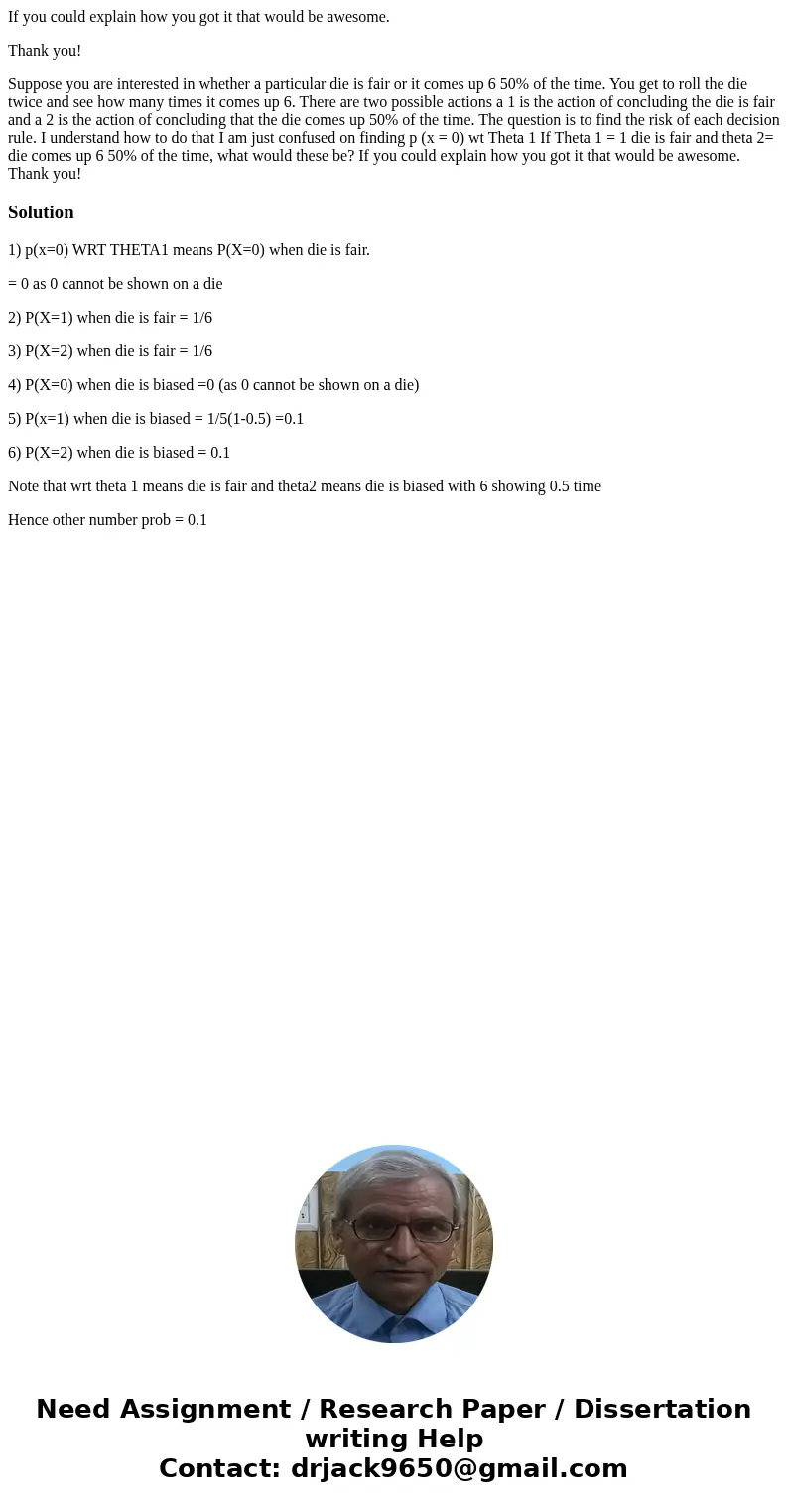If you could explain how you got it that would be awesome Th
If you could explain how you got it that would be awesome.
Thank you!
Suppose you are interested in whether a particular die is fair or it comes up 6 50% of the time. You get to roll the die twice and see how many times it comes up 6. There are two possible actions a 1 is the action of concluding the die is fair and a 2 is the action of concluding that the die comes up 50% of the time. The question is to find the risk of each decision rule. I understand how to do that I am just confused on finding p (x = 0) wt Theta 1 If Theta 1 = 1 die is fair and theta 2= die comes up 6 50% of the time, what would these be? If you could explain how you got it that would be awesome. Thank you!Solution
1) p(x=0) WRT THETA1 means P(X=0) when die is fair.
= 0 as 0 cannot be shown on a die
2) P(X=1) when die is fair = 1/6
3) P(X=2) when die is fair = 1/6
4) P(X=0) when die is biased =0 (as 0 cannot be shown on a die)
5) P(x=1) when die is biased = 1/5(1-0.5) =0.1
6) P(X=2) when die is biased = 0.1
Note that wrt theta 1 means die is fair and theta2 means die is biased with 6 showing 0.5 time
Hence other number prob = 0.1

 Homework Sourse
Homework Sourse